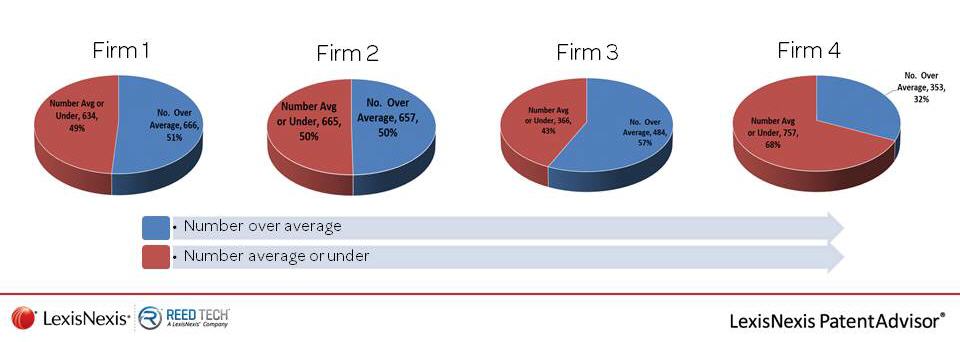5 Ways to Use Patent Data Analytics to Boost Business Development

In today’s increasingly competitive legal industry, intellectual property attorneys face challenges from all sides. Small and medium-sized boutique intellectual property (IP) firms may battle for market share against the IP giants, while big law firms may struggle to contain costs and operate efficiently. Regardless of size, IP law firms are increasingly focusing on business development efforts to bring in new clients. Those client pitches do not have to rely solely on charm and persuasion, however. Many law firms could go into business development meetings with hard patent data analytics to back up their arguments that they are the best choice for an IP-driven company’s business.
Here are five ways that patent data analytics tools can deliver results that could win over your next client.
Overall allowance rate. A good patent data analytics tool should be able to show a given law firm’s granted, abandoned and pending patent applications and compute an overall average allowance rate for that firm. Comparing that figure to the USPTO’s overall allowance rate of about 53 percent or to the allowance rates of competing law firms can position a firm in a positive light.

Average pendency. IP-driven businesses invest the time and money in pursuing patent protection when the cost-benefit equation indicates that it is in their financial interest to do so. Time is money, however, and the longer a patent prosecution takes, the more the process costs and the less protection the company gets. IP law firms can use patent data analytics tools to demonstrate their track record of getting from filing to allowance more quickly than the USPTO average or than a competitor.
Success in a given art unit. Obtaining a U.S. patent is not a linear process; it varies greatly depending upon which art unit the application is filed under and to which individual examiner it is assigned. Patent data analytics tools that can drill down to examine a law firm’s statistics within a given art unit can help a firm demonstrate a history of success within the client’s relevant field of art.
RCE statistics. Filing a Request for Continued Examination can be a smart patent prosecution strategy in certain cases, but even then, it comes with an additional cost. Showing a prospective client that your firm has historically been able to secure patents with fewer RCEs than a competitor can demonstrate cost savings and operational efficiency.
Appeal outcomes shown via patent data analytics. No one wants to have to file an appeal of an examiner’s final rejection, but when they do, they want to have a reasonable chance of success. Patent data analytics tools can show a prospective client how many of a law firm’s prior patent applications required an appeal, and how many of those appeals resulted in wins for the applicant.
Bring predictability and productivity to your patent prosecution process with LexisNexis PatentAdvisor®.
Access examiner analytics from the USPTO Patent Center and Private PAIR websites.
